#essential oil 101
Text
Yellow Flowers Beside a Clear Glass Bottle with Essential Oil
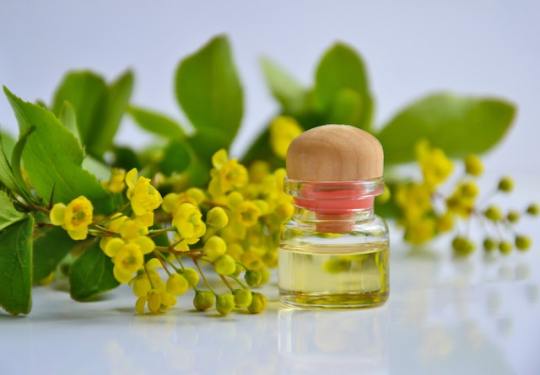
It is only with the heart that one can see rightly; what is essential is invisible to the eye. See more...
#essential oils#young living essential oils#how to use essential oils#essential oil#best essential oils#lavender essential oil#essential oil uses#essential oils 101#essential oil diffuser#essential oils for skin#essential oil education#peppermint essential oil#diy essential oils#lemon essential oil#what are essential oils#essential oils for sleep#essential oils diffuser#peppermint essential oil uses#essential#essential oil 101#best essential oil
0 notes
Text
Explain the basic: Oils
Check out Part 1, which explains how to use the things down below.
Disclaimer: All the things in this post are based on research and personal experience. As much as I could be a teacher, I suggest you find many resources for knowledge to develop your own experiences.
Make sure you research the oils you buy/use because some oils can damage or hurt your skin in a really bad way. as well as some aromatherapy oils that can hurt your pet (if you have one).

Types of oils
Anointing oils — A sacred oil that’s blessed and charged and specially formulated for a specific purpose, usually for people.
Carrier oils — Vegetable and mineral oils that are used to help dilute essential oils that could cause skin irritation.
Condition oils — Anointing or conjure oils used to help relieve or improve someone’s condition.
Conjure oils — A dressing oil from an ancient practice usually African, European, or Native American traditions. Often found in Hoodoo.
Dressing oils — Specially prepared oil applied to spell and ritual objects before using them to sanctify, charge, and prepare them for use.
Essential oils — Volatile, concentrated oils, with the characteristic scent of the plant/flower they are from.
Ritual oils — Oils used to anoint candles, ritual tools, material, furniture, money, and other such items, and then use to anoint the body are often also called anointing oils.

Basic oils and their use:
Basil: Stimulates the mind, used in money-attracting oils, and encourages peace
Benzoin: Increases personal power and awakens the conscious mind
Bergamot: Money and protective rituals
Black Pepper: Protection and promotes courage
Chamomile: Meditation and inducing peace
Camphor: Purification and promoting celibacy
Cardamom: Energy to love and sexually oriented formulas
Cedarwood: Enhances spirituality
Cinnamon: Money and psychic awareness
Clove: Courage and protection
Coriander: Love and healing
Cypress: Blessing, consecration, and protection. Helps ease loss
Eucalyptus: All healing and purification.
Frankincense: Spirituality and meditation
Geranium: Happiness and protection
Ginger: Courage, love, money, and sexuality
Grapefruit: Purification
Jasmine: Love, psychic awareness, peace, spirituality, and sexuality
Juniper: Protection, purification, moon symbolism, and healing
Lavender: Health, love, peace, and consciousness
Lemon: Purification, healing, and lunar use
Lemongrass: Psychic awareness and purification
Lemon verbena: Love
Lime: Purification and protection
Lotus: Spirituality, healing, and meditation
Magnolia: Meditation, love, and psychic awareness
Myrrh: Spirituality, meditation, and healing
Neroli: Happiness and purification
Niaouli: Protection
Oakmoss: Attract money
Orange: Purification
Palma Rosa: Love and healing
Patchouli: Money, sex, and physical energy
Peppermint: Purification
Pine: Purification, protection, money, and healing
Rose: Love, peace, sexual desires, and enhancing beauty
Rosemary: Love and healing
Sandalwood: Spiritualty, meditation, sex, and healing
Tangerine: Sun symbol, power, and strength
Tonka: Money
Vetivert: Money
Yarrow: Love, courage, and psychic awareness
Ylang Ylang: Love, peace, and sex

As always, I will love to hear your thoughts! and if you have any questions, I will be more than happy to answer them! If you liked it, leave a comment or reblog (that is always appreciated!). if you are intrested in more method check the masterlist!
#journal#manifestation#manifestation method#manifesting#shifting methods#manifesation#spiritual development#loa methods#explain the method#explained#essential oils#witchcraft#witchblr#witches#witchcore#witch#witchcraft 101#witchcraft oils#pagan witch#witchy#witchcraft community#witchcraft smp#witchcraft books#witchcraft aesthetic#wicca#teaching witchcraft#teaching#subliminals#affirmation#art
262 notes
·
View notes
Text
How To Dilute Essential Oils
Be ready for a long one. Essential oils can be tricky. And they are something you don't want to be using undiluted for the hell of it or because an article you read claims it's more potent if you, ya know, put it directly on (yikes, don't fall for that!). I got certified in aromatherapy five(ish) years ago for the hell of it & to help my business for in-person clientele. While I don't use it as much as I used to, I did learn all the proper dilution techniques that I thought I would share here!
Before I dive into this breakdown, know that it is in your best interest to dilute any essential oil. While lavender doesn't cause a reaction out of most people, it is still in a highly concentrated form. There are many oils, such as cinnamon, that you should never put on your skin without diluting first, as it will cause irritation. It falls into a category of "hot oils" which means that you will feel a tingle or burning sensation, depending on your skin type. Tea tree and lavender are the only two you can use undiluted (and if you have sensitive skin, you may still want to dilute to be on the safe side) - for anything else, you should be grabbing your carrier oil.
Do not replace the carrier oil with water. You remember that you learned somewhere growing up that water and oil do not mix? Yep, same rule applies. They will separate and the oil will still go directly into your skin.
That being said, carrier oils that have nourishing properties for the skin tend to be best. Jojoba, coconut, almond, hell even olive oil all work. The essential oil sticks with the fats in the carrier oil and will slowly absorb into your skin (via the fat in your skin). All of this prevents skin irritation. You can buy these in bulk for a discounted price if you find yourself using essential oils on a regular basis to save on money.
Carrier Oil Breakdown
• Jojoba - usually a favorite of many people that use essential oils in their skincare products. Odorless, non-greasy, a little waxy.
• Coconut - light, doesn't go rancid or leave residue, good for every skin type! You can also use it in a wide range of product types.
• Grape seed - mostly odorless. Best for delicate skin (sensitive skin, for the elderly, etc.)
• Olive oil - heavy & can be greasy, so buy the light stuff. Has strong odor. High in vitamins and minerals, very good for your hair and skin! Be aware though that it will leave some residue until fully soaked in & can clog pores. Personally, I use this a lot for my anointing oils or salves.
• Almond - slightly oily. Best for dry or irritated skin. Beauty & health recipes.
So, some quick pointers.
• Firstly, best way to remember it is it is 1 drop of essential oil per 1 tsp of carrier oil.
• 1% is recommended for children, the elderly, and immunocompromised. 2% dilution for a healthy adult. 3% for short term, small areas (if you're washing it off right away or sometimes in the situations of pain relief).
• Make sure you are diluting if using for hair care.
• Make sure you are diluting if adding into the bath. Remember, oil separates from water. Put the diluted mix in.
• Also, if you're trying to mix essential oils, go ahead and do so. Just make sure that it equals out the entire drop rate (if it were 6 drops, for example, it's be 3 drops of lavender oil and 3 drops of rosemary).
• This is where I'll answer the whole, well what the hell would you use 10% or 25% dilution for? You can use 10% for specific issues, such as an injury. Don't keep at it for more than two weeks. For 25% is the most you should ever go, and that would be for debilitating pain. Don't be using that every day though, and not every type of essential oil is good for that high or concentration.
Now, here's a little conversion list. Hopefully it's clear enough!
• Okay I know that I have followers on both sides of the globe so here's this: 5ml = 1 tsp. 10ml = 2 tsp. 15ml = 1/2 oz. 30ml = 1 oz. Do with that what you will. I am american but I'll be using millimeters to explain since I, too, find it easier.
• For 0.5% dilution: 10ml = 1 drop. 15ml = 1.5 drops. 30ml = 3 drops. You can't do 5ml for 0.5%.
• For 1% dilution: 5ml = 1 drop. 10ml = 2 drops. 15ml = 3 drops. 30ml = 6 drops.
• For 2% dilution: 5ml = 2 drops. 10ml = 4 drops. 15ml = 6 drops. 30ml = 12 drops.
• For 3% dilution: 5ml = 3 drops. 10ml = 6 drops. 15ml = 9 drops. 30ml = 18 drops.
• For 10% dilution: 5ml = 10 drops. 10ml = 20 drops. 15ml = 30 drops. 30ml = 60 drops.
• For 25% dilution: 5ml = 25 drops. 10ml = 50 drops. 15 ml = 75 drops. 30ml = 150ml.
This is where I will mention: children, the elderly, and those that have chronic skin conditions will oftentimes need different dilution rates than the generically given 1%. If you someone that fall into this category, it is in your best interest to speak to your doctor first. Find someone certified that can help you with finding the proper dilution rates, as you may need further adjustments, don't just use these guidelines.
I don't offer clients aromatherapy-only packages anymore (as it worked better in combination). When I was offering that service, I kept it strictly in-person for a reason!
#witchcraft#witch#witchblr#green witch#essential oils#witch tips#witchcraft 101#how to dilute essential oils#aromatherapy#healing
101 notes
·
View notes
Text
High Maintenance 101
Prissy Girl Beauty Regimens 🎀


my prissy girl guide to beauty services and building a beauty lifestyle that fits you 💗
Skincare:
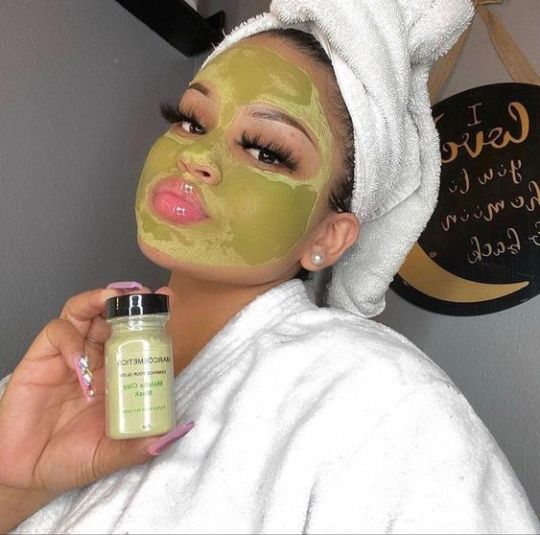
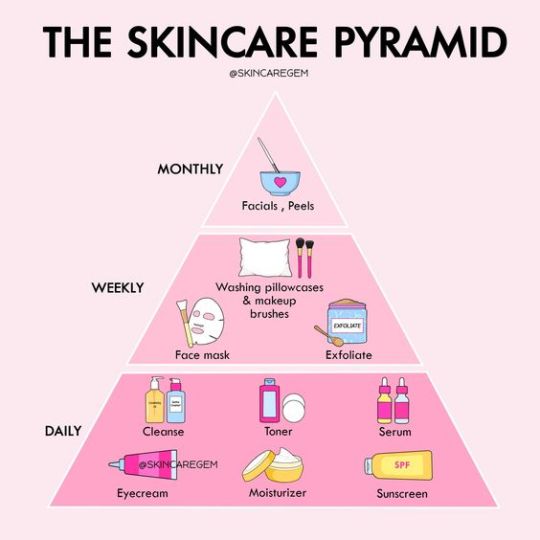
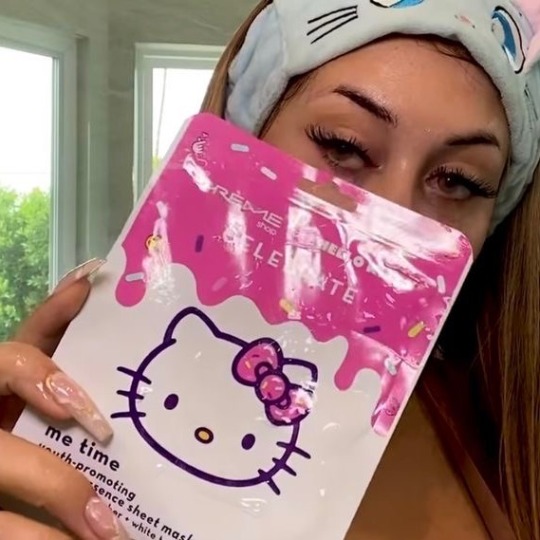
Essential Skincare Routine ❤︎︎
twice daily, in the morning and at night
daytime: gentle cleanser, toner, serum, eye cream, moisturizer, SPF
prep and protect skin
nighttime: double cleansing with oil and cleanser, exfoliation, treatments, moisturizer
wash away the day and help skin accept treatments and actives during your beauty sleep
products will change depending on skin type and goals, but sequence will more or less stay the same
Face Masks + Treatments ❤︎︎
Face Masks -
typically done at home 1-3x/week
clay, gel, mud, cream, liquid
my fav masks at home:
aha + bha liquid mask by the ordinary: a literal overhaul of my pores. it’s refining and helps reduce texture and hyperpigmentation. 1-2 x/week
korean modeling mask: i use this after doing everything in my routine. it’s super cooling and smooths my skin out. the low temp of the mask reduces flushing of my skin and helps the steps in my routine absorb better. 2-3 x/week
Treatments -
done either 1-3x/week and/or exclusively at night
consumer grade Retinols, AHAs, BHAs at high strength
little extra things i like to use to enhance my routine:
gua sha, ice pack, rose quartz roller, however often i choose
Facials ❤︎︎
done every 1-2 months by licensed estheticians
often includes exfoliation and extraction
Classic Facial: cleanse, extract, massage, moisturize
HydraFacials: extracts pores while infusing serums to boost skin’s vitamin and nutrient content
dry, dehydrated skin
Microdermabrasion: microabrasive tool removes outermost, textured, damaged layer of skin using suction to reveal a smooth and refined new layer of skin
sun damaged, aged, textured skin or skin with hyperpigmentation
Chemical Peel: application of medical grade AHA, BHA, Lactic Acid, Fruit Enzymes, or Retinol to peel away top layers of skin over the course of 1-2 weeks
pore refining, brightening, and anti-aging
after care is crucial. skin will be peeling and sensitivity to sun is increased. SPF MUST be used. it’s heavily advised that clients stay home for the first few days.
HydroJelly Facial: facial made of electrolytes, algae, organic white grain oat flour, rice flour, and white willow bark powder. leaving your skin hydrated, plump, and nourished. forms a vacuum-like seal that compresses facial contours.
there are 25 different hydrojelly pro masks for most skin concerns you may have, check here
More Facials ❤︎︎
Contouring Facial: sculpting, tightening, and lifting of facial muscles
LED Facial: uses LED light to soothe inflammation, aiding in acne healing and prevention
Vampire Facial: plumps skin and improves wrinkles by extracting blood, removing its platelets, then either re-injecting it into the skin or applying it topically
Diamond File Facial: finely ground diamonds resurface skin by filing to improve dark spots
Glass Skin Botox: multiple tiny botox injections just below the surface of the skin. alleviate fine lines, redness, texture, and more achieving glass skin
AquaGold Facial: microinjections that combine vampire facial methods, hyaluronic acid, botox, stem cells, antioxidants, vitamins, peptides, etc. improves fine lines, wrinkles, pores, pigmentation, acne scarring, dryness, tone, texture, skin elasticity, and more
cite
Hair:

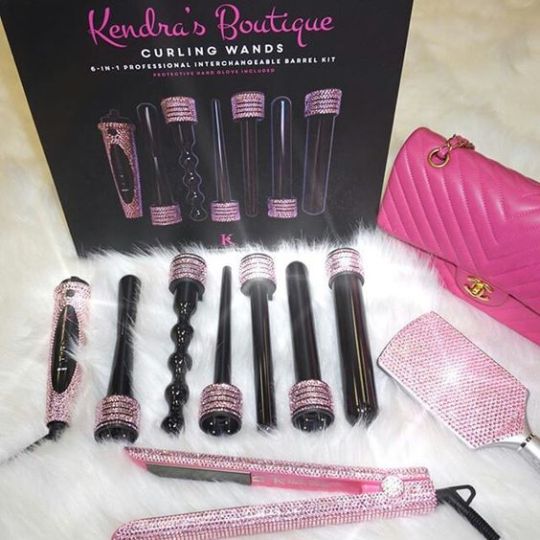
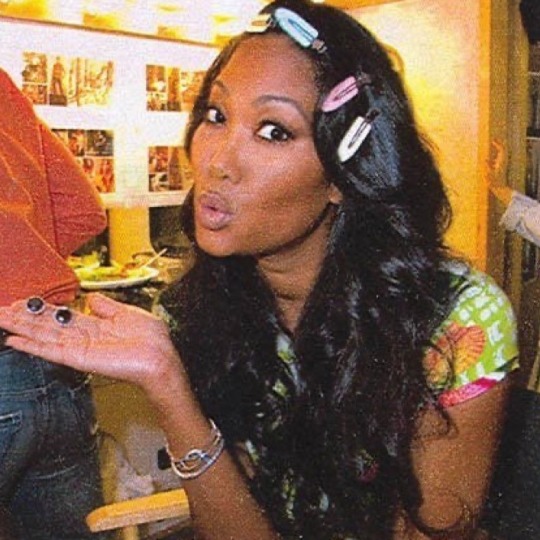
Hair Care ❤︎︎
Wash Routines:
curly textured: wash and condition every 2-3 weeks, deep condition every 1-2 weeks
straight: wash and condition every 2-3 days, deep condition every 2-3 weeks
Styling ︎❤︎︎
Hair should have a style everyday! At home hairstyling is limitless and really depends on your taste and lifestyle. The everyday woman does her own her once every 1-4 weeks using natural hair products, heat, or other tools.
Professional Stylists:
hair is styled every 1-3 months: uses heat to straighten or curl, extensions to lengthen and add volume, shears to maintain/attain a shape and length
trim ends: every 6-8 weeks
hair color: touched up roughly every 6-8 weeks (depending on how fast your hair is growing and how fast your color will fade)
Silk Press:
after a clarifying wash and deep conditioning, natural hair is straightened using flat iron and/or pressing comb, then usually curled in feathers or pin curls to preserve the style
lasts 3-4 weeks depending on maintenance
preserved by wrapping hair at night, keep hands out of hair, and using a wide toothed comb only
can be further styled with different kind of rollers, or with pin curls
Braids:
afrocentric hairstyles typically done to protect hair while maintaining beauty
lasts 3-8 weeks
styles include knotless braids, faux locs, stitch braids, french braids, etc
Extensions:
hair added to natural hair to enhance length or volume
can be done at home with patience and proper materials
sew-in extensions: (my personal fav) 1-2 months
your natural hair gets braided down flush to your scalp and the bundles are sewn on by the wefts in a flat pattern typically with a section of hair left out to cover the wefts $100-600
microlinks: up to 4 months
i-tip extension is added to hair using micropliers, clippers and loop tool. takes far longer than most extension methods but looks the absolute most natural $500-1000
tape-in extensions: up to a year, touch ups every 4-6 weeks
medical grade tape is used to attach extensions to small sections of hair $200-400
clip-in extensions: 3-6 months
extensions are clipped on by the wefts. the hair itself can last up to six months, but it’s not recommended to sleep, shower, or swim with the extensions in $50-100
Natural Styles:
all last roughly 1-2 weeks at most. allowing hair to completely DRY is crucial for these styles. your natural hair can be further changed in styles like buns, puffs, etc once dry
natural hair essentials: scalp oil, leave in conditioner, detangling brush, wide tooth comb, curling cream, styling gel, edge control and edge brush
wash n’ go
wash and detangle, then use leave in conditioner to keep hair moist. oil on the scalp and ends is recommended for growth and healthy ends
bantu knots
a traditionally african style where the hair is cleanly sectioned (usually parted in a cute pattern) and twisted into knots. style can be worn just like this or taken down for curls
braid/twist out
a specific pattern of curls is achieved after hair is twisted or braided with curl preserving products. end result depends on how big your twists or braids are
roller set
hair is sprayed with water and curl cream applied before roller of your choice is added. hair is left to dry usually overnight for springy well formed curls
Brows and Lashes:

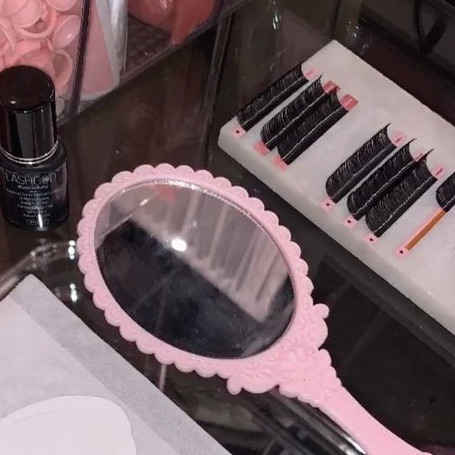
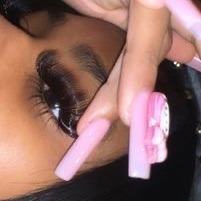
Brow Shaping ❤︎︎
in salon or at home
Waxing - every 3 weeks
Threading- every 2-3 weeks
Razor Shaping - weekly
Brow Enhancement ❤︎︎
Tinting - monthly
can be done at home or by pro in the salon
Microblading - every 1-3 years + annual touch ups, exclusively professional work
cosmetic tattooing using a manual tool with nearly invisible hair-like needles to inject pigment in brows to create your desired brow look
Lash Enhancements ❤︎︎
*done exclusively by professionals
Lifts - every 6 weeks
basically a perm for your lashes to curl them semi-permanently for lashes to appear longer
Lash Extensions - new set every 6-8 weeks, fill ins every 2-3 weeks depending on quality and style
false individual strands of lashes glued to natural lashes to create semi-permanent length and/or volume
lash baths: wet lashes and apply a small amount of gentle cleanser or a “lash bath” to lashes. cleanse lashes and eyelids for about 10 seconds. hold a towel under your eye and use a nozzle bottle to flush soap and bacteria from lashes then dry with a disposable lint free towel. finish by brushing your lashes with a spoolie. daily.
Lash Styles:
Classic: one lash on each fan, thin lashes
Volume: fluffier lashes with more lashes on each fan
Hybrid: uses classic and volume lashes to make an alternated look
Russian: volume lashes made with very thin individuals, 5-6 extensions per natural lash, fanned out look
DIY Lash Extensions - lasts about a week (sometimes longer)
lash fragments or individual wisps are glued either under the lashes or on the lash line. KISS Falscara is a product that makes this concept simple and easy
Nails:
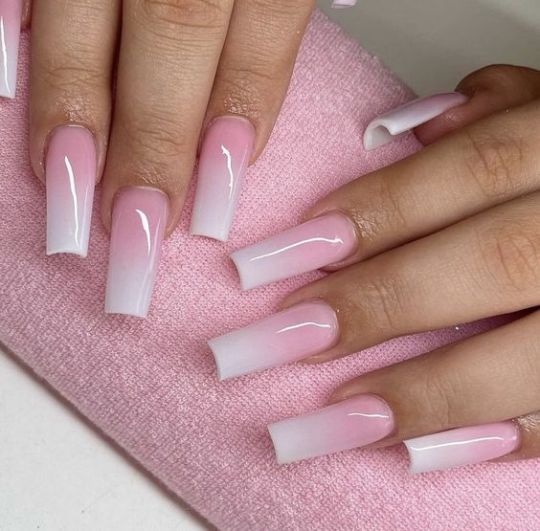
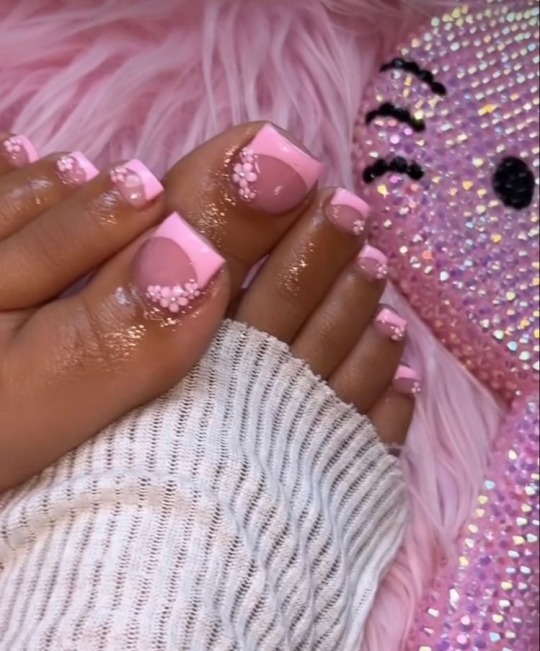
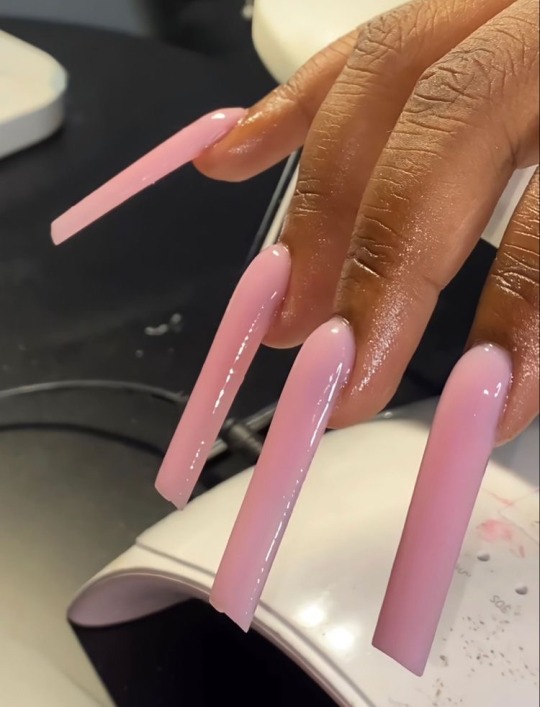
all these services can be done at home with the proper materials and KNOWLEDGE
Classic Manicure ❤︎︎
every 1-2 weeks
nail service that consists of soaking hands in warm soapy water then drying them. nails are trimmed, filed, and buffed. cuticles are pushed back before applying nail polish (base coat, color, top coat), then finally cuticle oil is applied.
nails can be enhanced with rhinestones, glitter, or charms and attached with uv gel or nail glue
my fav styles are pink, cream, white, black and any french tip using those colors
Pedicure ❤︎︎
every 2-4 weeks
sister to the classic manicure, but can be upgraded depending on materials. steps are similar to manicure, except feet are scrubbed and exfoliated before feet are washed and dried to apply nail color
regular polish, acrylic, or gel can be used on toenails
Gel or Shellac Mani ❤︎︎
every 2-3 weeks
same process as the classic manicure, but traditional nail polish is replaced with uv base coat, gel or CND Shellac polish, then uv top coat that’s cured in a UV or LED lamp
longer lasting and more strong/3d than classic mani and is typically removed by soaking in acetone
Apres Gel-X Nails ❤︎︎
every 2-3 weeks
my personal fav at home nails using the artme yoko matsuda nails. after doing a classic mani sans polish, you apply a dehydrator and primer to prep nail for gel. then you apply builder gel to your natural nail and cure. then you apply that same builder to the nail extension after etching it using an electric drill or acetone. marry the gel to your nail and cure. then just shape to your liking and top with uv top coat. tutorial here
Acrylic Nails ❤︎︎
every 2-3 weeks, nails are fully grown out after 6 weeks
manicure done with liquid monomer and acrylic powder to build and extend natural nail, then polished with color or just a top coat if desired
Russian Mani ❤︎︎
every 4-5 weeks
essentially a gel manicure, but more invasive. the eponychium is snipped away so polish can be applied more closely and flush to the cuticle. this aids in visuals and longevity
service is seen as risky because the skin is more susceptible to fungal or bacterial infection. this is actually how i do my nails at home.
Body:


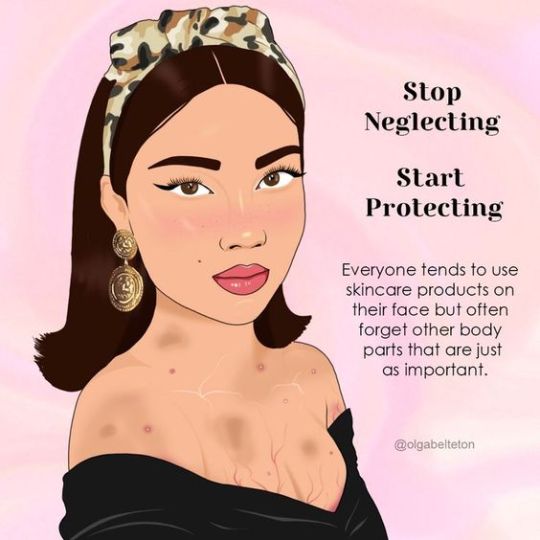
Bathing ❤︎︎
2x daily
self explanatory, we all know how to bathe. i have other posts that talk about my shower and bath routines.
use a gentle cleanser then a scented body wash to complement perfume and smell fresh all day.
if needed, you can use body soaps with actives like aha, bha or retinol to exfoliate or treat skin at night
exfoliation - 2-3x/week. using scrubs, loofahs, bath brushes, etc.
Hair Removal ❤︎︎
shaving - 2-3x/week
waxing - every 3-5 weeks
sugaring - monthly
ipl device - a device that uses light therapy to slowly destroy hair follicles and unwanted pigment in skin. i use mine after every 5-6 shaves but i could really use it more often.
Vajacial ❤︎︎
1-2x/month
a “facial” for your lady area
the esthetician will first wax, then cleanse and apply an enzyme exfoliant. then they extract any blackheads or ingrown hairs from the area before applying a soothing mask usually in the jelly form.
Moisture and Hydration ❤︎︎
body cream or lotion - daily right after bathing to hydrate skin
body oil - daily to seal in moisture and protect skin from debris and dryness
masks - weekly to address particular skin concerns
ex. when i was having eczema flare ups on my back, i used a dead sea mud mask every 1-2 weeks to help treat it
done at home or at spa
glycolic, clay, mud, salicylic, etc.
Enhancement Procedures:


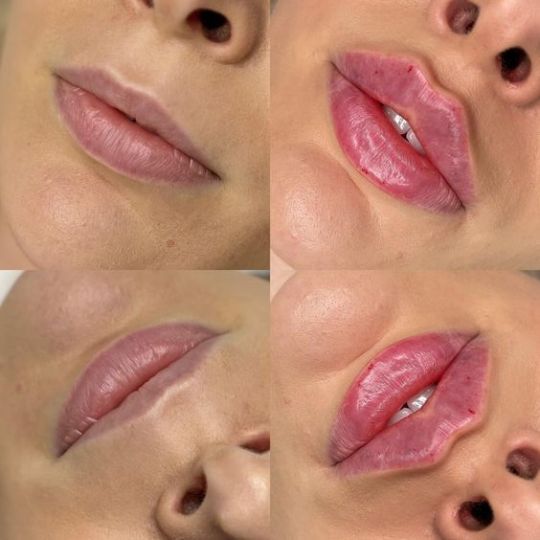
the goal is to look younger and balance facial features. all these services are exclusively done by professionals usually in a medspa and are widely considered luxury.
Botox ❤︎︎
every 6-8 months; between brows, smile lines, outer corners of eyes, etc
discourages muscle movement to reduce wrinkles
Lifts ❤︎︎
lasts about 10 years; face, neck, brow, eyelids
skin is lifted to desired look, then excess skin is removed
Fillers ︎❤︎︎
every 6-12 months; under-eye, lips, jawline, wrinkle sites, cheekbones
injects acids (usually naturally occurring) like Hyaluronic Acid and Calcium Hydroxylapatite to add volume to your face
Body Contouring ❤︎︎
every 2-4 months until desired results are achieved
non invasive liposuction to achieve desired physique
CoolSculpting - cryolipolysis freezes fat cells for the body to the metabolize and and remove them
SculpSure - essentially the same as CoolSculpting, but uses heat and laser technology to destroy fat cells
Laser Hair Removal ❤︎︎
every 5-6 weeks; bikini, underarms, legs, arms
touch ups done every 1-2 years
hair growth is inhibited by exposing follicles to light at frequencies that kill them
Building the Regimen 🗒️💕:



when making appointments with your “glam squad” you can stagger your services by week depending on what’s being done. for example you can get your mani and pedi done one week. then your facials, brows and lashes another week.
Things to Keep in Mind 💭💞:
these frequencies won’t be the same for everyone depending on personal wants, budgets, etc. but will most likely land somewhere in the ranges i gave. if you need touch ups or redos any sooner than i mapped out, then the service most likely was of poor quality.
anything done at home may or may not be up to the level of detail and longevity as salon or spa work. if you see yourself doing the majority of your beauty maintenance at home, this can save money but may end up taking more time than professional services. so it’s a give and take.
More Resources:
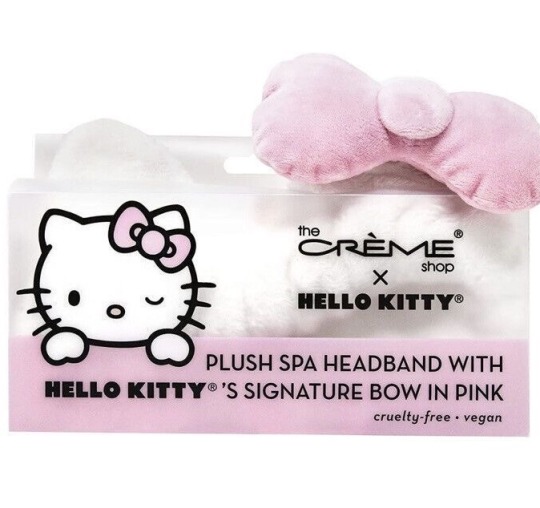


manage your routines, services and products using a beauty binder
a look at my skincare routine
at home beauty treatments for the summer
my hair care routine at home
pretty on purpose by @shefromhouston
monthly beauty routine by @angeljpg
dream girl routines by me
#the prissy girl agenda#dream girl journey#prissy lifestyle tips 💕🎀#dream girl routines#masterpost#my posts#skincare
1K notes
·
View notes
Text




What shadow work do you need to do?
Pile 1-(6 of swords, 2 of cups rx, 5 of swords, 5 of cups rx, Page of swords rx, Queen of cups, 8 of pentacles, The Lovers)
There's a lot of lingering heartbreak from your past that you need to let go of. It's time to move on. Accept what has already happened. Accept what you cannot change. This could even be trauma that you have from a certain family member. It's time to release and give some love back to yourself. You need to be softer with your communication. Be nicer to yourself. You should listen to some self-love affirmations. Energy healing frequencies may benefit you as well. You can find these videos all over youtube.
*Angel messages: "Spend time alone in nature, meditating about your desires and intentions. Ask the angels to help you gain a positive perspective. ; Keep charging ahead, and don't take no for an answer. Expect miraculous solutions to appear."
Pile 2-(The Hermit, 7 of pentacles rx, 4 of cups, 10 of swords, 8 of pentacles, 10 of cups, 4 of pentacles, The Magician)
You need to spend some time alone and get your mind right. Your laziness is causing delays and a lack of follow through with your plans. Stop blocking yourself babe. Get your ass up and fucking work!🤣 You may be sad about your current environment or just with the way your life is going. You're literally the only person that can change that tho. Your 10 of cups is already waiting on you. You've gotta be willing to work for it tho. You need to take yourself more seriously. You could have so much rn. Think more positively, and watch how it shifts your whole reality. Subliminals related to mindset and self-concept would benefit you; or even meditations with positive affirmations. Videos related to self-help and manifestation will help as well. Watch creators like TheWizardLiz or Anila Sita 101. You can find these videos on youtube. Get more comfortable with change. What was lost was never really meant for you in the first place. Remember that rejection is protection. You ARE worth it. 💗
*Angel message: "I am helping you heal physical challenges in yourself and others. You are a healer like me."
Pile 3-(Page of cups, Temperance, The High Priestess, Strength, The Emperor, Knight of swords, 2 of wands rx, The Hanged Man)
Get in touch with your spiritual side more. Work with spiritual and protective tools. Sage/smudging your space often will really benefit you. Crystals and protective jewelry will help replenish and protect your energy. You can even use spiritual essential oils; i'm feeling specifically that you should use oils that aid your health, self-love, and protection. You can find this stuff all over Etsy! Leave your comfort zone more. Work on releasing your fears. It's just fear babe. Stop letting it hold you back from your dreams! Be more direct with the way you communicate. Don't be afraid to be the loudest person in the room. Speak your truth and stand on it. Let yourself shine!🌟
*Angel message: "I bring you a message from your deceased loved one; I am happy, at peace, and I love you very much. Please don't worry about me."
Pile 4-(Knight of pentacles, 8 of swords, The World rx, The Moon, 2 of cups, 3 of wands rx, The Empress, 6 of wands rx, The Star) *angel # confirmation 222, 999
It's time to practice boundaries with certain individuals. Some of these people are holding you back from your true potential. I heard "blind leading the blind". This could be family or close friends. It's time to ride your own wave! Stop seeking validation from outside sources. Do what you want! Show up for yourself more. You should be your biggest cheerleader. Celebrate your small milestones, not just the big ones. Your ideas are meant to take you far in life! Trust the path you're on.
*Angel messages: "I am with you, giving you the courage to make life changes that will help you work on your divine life purpose. ; You have a gift for working with young people, and your divine life purpose involves helping, teaching, or parenting children."
💋Extra message: I wanted to thank you guys bc I recently received 10k likes on my page! THANK YALL SO MUCH!😭😭💖 Yall always show me endless love on this account. I honestly never thought that it would grow into what it is today. I always had doubts about starting this page before. This is actually one of the few places where i feel comfortable enough to express myself with yall. I will never forget and will forever be thankful for the constant love i get on here. luv yall💘
335 notes
·
View notes
Text
Herbalism 101: Basil
EP. 6

Fun fact
The word Basil comes from the Greek word “basileus” which means king. Because of this, many believe it led to the creation of the word “basilisk” due to the creature's strength.
Properties : Love, money
Uses in the kitchen
Basil is a pretty common kitchen ingredient and can be delicious in many different cuisines. It can be found cuisines anywhere from Italian to South Asian. It is often used in sauces and broths, but also makes a good garnish.
Uses in healing
Basil is amazing for stomach issues and can also be used as a mood booster. Basil has been used for digestive issues for centuries, including as a way to help stomach cramps in Chinese medicine. It is also said to help improve one's mood.
Uses in witchcraft
I often have fresh Basil on my windowsill because of how versatile it is. My favorite use, however, is to use Basil essential oil in cleaning in order to set intentions of love and money in my home or to banish bad energy. I will often put the essential oil into a spray bottle with some water and other oils, then I spray a small amount on what I am cleaning and wipe it in the direction correlating to my desire. (Towards me to attract, away from me to dispel)
Tips for growing at home
Basil is not too tricky to grow, but it can be sensitive to temperature. It's best to keep the plant somewhere on the warmer side, with plenty of sunlight and moist soil. The other big tip is to prune/trim the flowering parts or dead leaves often.
Recipe
Pesto for love and joy
1 cup fresh basil leaves
2 cups Parmesan cheese
1-2 tablespoons of pine nuts
3 cloves of garlic
Around 1/2 cup of olive oil
Salt to taste
Combine ingredients in a mixer while slowly adding in olive oil until you get a consistency you enjoy. The basil is good for love, garlic can amplify intentions, and pine nuts can represent comfort and sometimes fertility.
#herbalism 101#kitchen witch#witchcraft#witch#green witch#cottage witch#herbs#magick#spellwork#herbalism#herbalmedicine#recipe
237 notes
·
View notes
Text
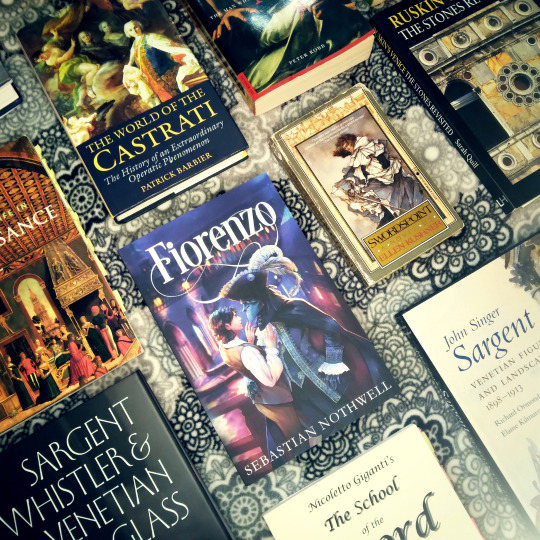

FIORENZO is a queer fantasy-of-manners romance featuring hurt/comfort, swordplay, and a happily-ever-after. And it’s finally out in paperback! Shown here with some of the books that inspired it.
The World of the Castrati by Patrick Barbier
Not just a thorough examination of individual castrati lives but also the operatic world that created them. Highly recommended, even (or especially) if you know nothing of opera.
Nicoletto Giganti’s The School of the Sword
A swordfighting guide by a fencing master of Renaissance Venice. This book, combined with As You Wish (see below) and Vico Ortiz’s Fencing 101 class proved absolutely essential to making the fight scenes in Fiorenzo possible.
M: The Man Who Became Caravaggio by Peter Robb
Come for the art history lesson about a queer Renaissance painter, stay for the tennis court castration duel.
Art and Life in Renaissance Venice and Private Lives in Renaissance Venice by Patricia Fortini Brown
While the general history of Venice was necessary (see below), the more specific focus of Brown’s books provided absolutely invaluable insight into the the day-to-day habits of Venice’s historical citizens.
John Singer Sargent: Venetian Figures and Landscapes, 1898-1913
Sargent’s mind-blowing skill with oil portraits is well known, but his watercolour sketches of cityscapes and Venice architecture are truly astounding in their mastery of light and form. Seeing the city through his eyes over a hundred years ago was wildly inspiring.
Sargent, Whistler & Venetian Glass
This was an incredible traveling exhibit of Venetian glassware, lace, and other amazing examples of skilled craft alongside paintings by American artists who drew inspiration from Venice in the late 19th and early 20th centuries. I had the good fortune to catch it as it came through Mystic Seaport in Connecticut. It also included an actual Venetian gondola (dry-docked, no felze) which gave me an invaluable sense of just how absolutely huge those things are.
As You Wish: Inconceivable Tales from the Making of The Princess Bride by Cary Elwes and Joe Layden
Invaluable insight into the training, choreography, and filming process for one of the greatest swordfighting scenes in cinematic history.
The Princess Bride by William Goldman
It’s a swordfighting romance. Enough said.
Swordspoint by Ellen Kushner
It’s a queer swordfighting romance. Enough said. (Although I have said far more.)
Ruskin’s Venice: The Stones Revisited by Sarah Quill
Venice through the eyes of a Victorian.
Venice: A New History by Thomas F. Madden
A general history of Venice was essential in creating Halcyon.
~
FIORENZO is a queer fantasy-of-manners romance featuring hurt/comfort, swordplay, and a happily-ever-after. Available now wherever fine books are found!
Amazon • Apple Books • Barnes & Noble • Bookshop.org • Kobo • Smashwords
#fantasy of manners#john singer sargent#caravaggio#venice#fiorenzo#mannerpunk#swordspoint#the princess bride#queer romance#mm romance#gay romance#historical romance#historical fantasy#romantasy#sebastian nothwell
41 notes
·
View notes
Text
Greek Gods 101: Asklepios
Asklepios is a God of medicine and doctors. Excluding the universal offerings, some common offerings include:
Depictions of Serpents
Medication
Medical Tools (Bandages, Braces, Needles, Stethoscopes, Etc.)
Water
Healthy Foods
Citrus Fruits
Essential Oils
Herbal Teas
Mobility Aids or Depictions of Them
For devotional acts, some activities that can be done for him include:
Staying Hydrated
Eating Healthy
Exercising
Taking Care of Yourself or Others When Ill
Self-Care
Going to Doctor’s Appointments or Check-Ups
Learning First Aid
He is celebrated in 1 Athenian holiday:
Asklepia
#asklepios#asklepios god#hellenism#helpol#deities#hellenic#hellenic polytheism#hellenic community#hellenic pagan#hellenic polytheist#hellenic deities
58 notes
·
View notes
Text
Review: The House Witch by Arin Murphy-Hiscock
3.5/10 - This could have been a zine. As it stands, I was not the target audience for this book.
Maybe I'm just being mean since I read this one directly after Queering Your Craft, but my goodness I don't think I was the target audience for this one. I am cis-adjacent girl-not-woman, single, living at home with my highly conservative christian parents, and keep my craft in the closet. This book is for a cis-woman who is probably married, runs a household, has a couple of children, and is the spiritual-head-of-household who teaches the kids to say their prayers to the abstract Divine every night before they turn on their essential oil humidifier for bedtime.
It sure would be lovely to live in the world that Arin does, where I could consult with the other family members about their particular Spiritual Beliefs (TM) and integrate those into an Altar in the kitchen where we all make our offerings and say our prayers to the household spirits, but that is not the world I live in. If I tried to start that conversation at home, I'd very quickly wind up with a very aggressive visit from the local pastor who spoke at a rally for 45. Thanks, Arin, but I'm... gonna skip the build-an-altar-in-your-kitchen-and-invite-your-family-to-participate step.
So here's the thing. (And I'm starting to notice that this is a pattern with a lot of the witch books I read...) I would probably have loved this book if it were more of a personal memoir than a How To Witch 101 guide. And I get the feeling that this was more of a problem with publishing than with the author. I mean I could practically feel Arin bursting at the book-seams to tell me about how she practices her witchcraft spirituality in her home, but instead she's stuck trying to write about Hearthcraft (TM) as if it's a universal thing, since that's what's easiest to sell. The whole book feels like it's formatted and marketed to be a Witchcraft 101 book, but it doesn't do it well at all. In fact, in the beginning of the book, Arin practically scolds the reader by saying 'this is a spiritual path, not a magic one, and if you want a magic one, go get a book about magic.' Like... Arin, honey, your book is called The House Witch. I thought I was reading a book about witchcraft.
Furthermore, it feels like this book is filled up with a whole lot of pillow fluff to fill in the gaps. Did we need a whole chapter of cauldron mythology that we never ended up tying into anything else in the book? Did we need that? It seems like there's a lot of stuff in this book that was just put in for a page count; something to make the book seem like it has the wide-appeal of a Witchcraft 101 book. But it just came across as... idk, not genuine.
I just keep coming back to how much I would have loved to hear about Arin's own personal practice that she's so clearly passionate about!
Hey, but also... this book was an organizational mess. Why was the cookie recipe in the chapter with the cauldron lore instead of in the recipe chapter? Why were the instructions on making a clay figure of a household spirit in the chapter with the imaginary altar instead of in with the chapter on household spirits, or the chapter on crafts? Why was there a section on ethics sandwiched in between a section about talking to a tree spirit and a section about talking to a blender spirit, instead of in with the cooking chapter when we actually referenced ethics?
-sigh-
Look, while there wasn't really anything in this book that made me go "Oh wow that's a great idea, I need to use that!" there were a few sections that made me say "Hey, that particular thing is not of use to me, but the idea behind it absolutely is, and I should look into that." Which, once again, comes back to how much I wish this book was a personal memoir. Finding the little nuggets of information that told me what Arin does and how and why were so much more useful than the vague-and-generic step-by-step instructions of... whatever the instructions were for.
BTW, I read through this whole book, and I still am not sure of the definition of "spiritual" nor of "hearth" that we were using. I never did figure out if "hearth" meant "fireplace" or "center of the home" or "kitchen" or what.
Ultimately I came out of the book more confused than I was going in. It's not the worst witch book I've read -- [waves to Skye Alexander] -- and I did get at least some things out of it that I can ponder on my own. But man... idk what that book was for. I'm tired. I'm going to bed.
26 notes
·
View notes
Text
Rosemary - The Mundane and the Magical 101

Native to the Mediterranean this shrub has been valued as a brain tonic since Ancient Egyptian times. In the days of the ancient Greeks, Rosemary was valued by students revising exams and is still used for memory today along with some very tasty dishes.
Family: Labiate
Native to: Mediterranean
Parts harvested: Arial parts
Soil Type: Free draining dry or coastal sites
Watering: Every 1-2 weeks if grounded, Once a week if potted
Harvest when: Mid-May to mid-summer
Plant when: Spring
Sun position: Full sun
CAUTIONS: Avoid if pregnant. ALWAYS check with your local herbalist and doctor before consuming any medicinal medicine as they will be able to direct you on proper dosages. Some medications can also interact and so can some conditions with certain herbs.
Uses in Herbalism and healing:
Within digestion to protect the stomach lining from irritation and inflammation. To reduce bleeding and diarrhea.
An excellent brain tonic, increases blood flow to the brain, clears the mind, heightens alertness, improves concentration and memory.
Reduces inflammation and muscle tension. Makes a great migraine and headache cure.
As a hot tea Rosemary relieves fevers, sore throats, colds, flus and chest infections
Reduces heavy menstrual bleeding
Enhances elimination of wastes
Relives pain in arthritis
Can be made into oils, salves, honeys and teas
Uses in Magic:
Planet: Sun
Element: Fire
Very cleansing when burned, rids space of negativity and purifies space
Drives away nightmares and promotes good sleep when places under pillow
Aids memory and concentration
Aids in protection when burned or used in spellwork
Aids in clarity overall (situations, metal, etc)
Used traditionally in healing dolls to promote vitality and purification
To wash the hands before healing work, to cleanse the energy field
Typically a fantastic supplement for Frankincense
Grow Rosemary at your doorstep for this herbal ally to protect your home
Recipes:
Rosemary herbal infused oil
What's an infused oil? An infused oil is a herb that has been steeping in an oil such as olive oil for cooking or even magical purposes. This is NOT an essential oil! Today I’m going to teach you a folk method.
Supplies needed: Dried rosemary, oil of choice (Recommend olive oil for cooking)
Kitchenware: Grinder (If using whole herb), two 1-quart mason jars with lids, paper bag and cheesecloth.
Instructions: Fill the mason jar half way with dried coarsely ground Rosemary. Add oil to reach the top of the jar and close the lid tightly. Place the jar in the paper bag and store in a warm place. Shake the jar for several minutes twice a day for 1-2 weeks. Then strain the oil into another jar, secure the lid, and let sit for a few more days. Strain the oil again with a fine cheesecloth. Pour the herbal oil in a clean, dry jar and store in a cool dark place.
Will last 1-2 weeks stored out of the fridge, will last up to a year in the fridge.
Sources and reading material:
Please remember while I provide sources, some content is my own UPG from working for years intuitively with this herbal ally. What you do not see from my sources assume it is my UPG and take what information you will. Always cross reference and research yourself. All medical knowledge will be sourced.
Books:
Cunningham's Encyclopedia of Magical Herbs (Expanded and Revised Edition) by Scott Cunningham
Herbal Remedies for Everyday Living by Anne McIntyre
The Complete Herbal Tutor by Anne McIntyre
UPDATED: 3/29/24
Want to check out my other posts? Look at my Masterpost
41 notes
·
View notes
Text
Herbs 101 - Lavender
This post on website
Hi Tumblr!
This is a post I have started over a month ago and now I've finally finished it. Lavender is such a popular herb, and I probably my favourite. The aroma it gives off is fenomenal. So, let's look at it a bit deeper!
In this post, you'll learn:
basic info (other names, properties, ...)
its history (historical uses, where it came from)
physical description (the very few traits species of lavender share)
uses (all kinds of ways in which you can use lavender and links to some recipes)
how to harvest it (when, where)
how to dry it (a few methods including specific steps)
Click Keep Reading to read the entire post right here, or you can read it on the blog page Lavender. There you can also find the .md file for download, so that you can import it into logseq or notion grimoire, or just for a shorter version in the form of bullet poitns!

Lavender
Basic Info
Species: Lavandula
Other Names: Elf Leaf, Nardus, Spike, Spikenard
Most Popular Types: English Lavender, Spanish Lavender
Known Species: 47
Family: Lamiaceae (the mint/sage family)
Native to: Old World (historic Euro-Asia), to the mountainous zones of the Mediterranean, where there is dry and stony soil
Planet: Mercury
Element: air, water
Properties: calming / peace + sleep, protection, love, purification
History
Lavender has been in use for over 2500 years. In ancient Egypt it was used for embalming and cosmetics. Greeks also used it for cosmetic purposes, and also for its medicinal properties (which for example Dioscorides or Theophrastus wrote about).
It’s name comes from the latin verb Lavare - which means “to wash”. So it’s not too surprising that it was used by both Greeks and Romans in herbal baths. Romans also recognized it for its antiseptic properties and they brought it with them on campaigns to dress wounds. On top of that it was used as incense in religious ceremonies, or in sick rooms to disinfect them. And Arabs were the ones who brought their medicine to Spain, where it spread across the rest of Europe.
During the middle ages, it wasn’t used as much at first, only by monks and nuns. It was grown in gardens of monastries. Then in Tudor England, when the monastries were dissolved (1536) the lavender moved to domestic gardens, often planted near the laundry and clothing was then laid on it to dry while getting that fresh scent on them. Also, Queen Elizabeth I. allegedly put it in tea to help with her migraines and as a perfume.
In 17th century, lavender was considered a cure-all. Naturally, the price rose, especially when the Great Plague stroke. It is also a part of Four Thieves Vinegar, liquid in which grave robbers washed belongings of plague victims.
Description
Of course, each lavender type is different, however they share many similarities. Their flowers are arranged in whorls (surrounding the stem) on spikes above the foliage. They can be blue, violet, or lilac, sometimes even blackish purple or yellowish. The leaves and the way they they grow varies greatly across different species. However, here is an illustration of English lavender:
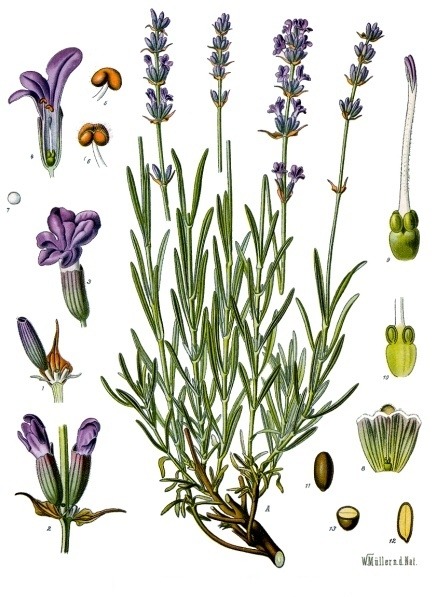
Uses
A very common things are lavender sachets. Now while we may often simply use it to sniff it (which is totally valid use as well btw, especially if you kind of squeeze it during anxiety), it has other uses too. When kept between laundry (into wardrobe, or even some places you store seasonal clothing), it can both give it the wonderful scent and also deter insects. You can also toss them into the dryer together with your laundry (Tutorial)! And since it is famous for helping with relaxation and sleep, you can always keep it near / under your pillow to help you with that.
Another popular use is in essential oils. It brings all the benefits mentioned above. For the smell, you can dab them on your skin and sniff that, or diffuse them in an aroma lamp. In the history section, I’ve mentioned soldiers carried it with them to treat wounds. It was proven to help wounds heal and can still be used that way today. For topical use, ALWAYS USE DILATED OILS ONLY. You can check out the guide to diluting essential oils on aromaweb.
A common use for herbs is tea. Lavender tea brings all the benefits we talked about - it is relaxing and healing. Only the buds are used for making the tea, not the leaves. You can of course also mix herbs - some other popular choices are chamomile, which is also enhancing the relaxation and sleep of lavender, and mint, which can help with some digestive problems, but also just tastes good with it. Senchateabar.com has all these three recipes (as to how long you should brew them).
Another common use is culinary. So integrating lavender into all kinds of food recipes. Now, while most lavender is safe to eat, there are some that simply shouldn’t be, like Levandula Stoechas, Levandula Latifolia and Lavandin, but others will just make your food taste soapy and overly floral. What’s used in recipes is culinary lavender, which is usually cultivated from English lavender and has less oil than aromatic lavender. Awesomeon20.com has some wonderful recipes with lavender and I actually quite like this site for kitchen magick, because they talk about magickal properties of the ingredients used and also have posts about which recipes are good for holidays of the Wheel of the Year for example.
And finally, we can of course use lavender in spells. We use it for spells that need the properties of relaxation, sleep, healing, or love. Also protection or just for general “witchy” things (like enhancing intuition, etc.). This can include spell jars, burning the herbs, sprinkling some lavender infused water, making circles with them, or so many other things. Some spell recipes:
anxiety spell jar
sleep spell sachet
self love and healing spell jar
Harvesting and Drying
I won’t be going into how to grow lavender, however I do want to talk about how and when to harvest it and how to dry it. It takes about 3 years for the plant to mature, so while you can absolutely harvest a bit before they mature, leaving them alone helps them grow and develop more.
Now let’s look into when to harvest. For best fragrance and essential oil content, that would be in their early bloom cycle (meaning when the buds are barely starting to bloom - so you have the stem full of buds, and you already see few of them blooming, while the others are still closed). That applies to each individual stem.
And also it is often said that you should harvest them in the morning, once dew has dried, because sun dissipates some of the fragrant essential oils.
You really don’t have to follow this strictly though. This is mostly to maximize the fragrance, and also because when the flowers mature and start browning, they tend to fall off the stem more easily. What you probably should follow is to not collect it wet. That means let the morning dew dry, and not collect within 24 hours of rain. That’s because damp environment increases the chance for the flower to rot.
As to how, we can use a small curved knife, which is ideal for cutting lavender, or pruning shears, or scissors. Just try to not use your hands for it, since that usually damages the stem, while sharp tools help it heal quicker. Also usually you want to organize them into bundles after cutting them, so you can wrap a rubber band around your wrist to make this easier.
Now to where exactly to cut. Well, with lavender used for culinary purposes, you should cut above any leaves and side branches, because leaves are not recommended for cooking (mostly for fragrance). Also please make sure your lavender is safe (and good) to eat before using it that way!
If you want longer stems, perhaps for decoration, or with lavender that doesn’t have much space between the flower and first leaves, then just follow the stem lower and cut at another junction. However, keep in mind that you shouldn’t cut more than two-thirds of the plant’s hight, so that it can continue to grow.
And now finally for drying itself. One way is to hang it in bundles in a dry, warm, airy room. Also in the dark, which helps it keep its color. To help the air circulate, you can just use a fan (if it’s some space like a basement or a closet). The bunches should be tied secure enough, so that it doesn’t fall apart, but not too tight. Also one source recommends to not dry them in spaces like garage, where they’d be exposed to engine and chemical fumes. It can take up to 6 weeks for them to dry this way, and you’ll know the stems are dry once they break instead of bending.
Another way is to dry them in food dehydrator. This speeds up the drying process significantly, while keeping the quality of the flowers. For this, remove the stems, leaving only flower buds in tact. Put them on the dehydrator trays so that they don’t touch each other (and use tray liners if you have them and the flowers are falling through, or even parchment paper). Set it to a low temperature - 95°F (or 35°C). It shouldn’t be more than 100 to 105°F (if you don’t have a lower setting). It should take about 24 to 48 hours to dry completely. Again, to find out if it’s dry, just try to snap one of the larger bud bundles in half, and if it bends, then it’s not dry yet.
Another method is to dry them in an oven. This is not ideal, because lowest setting on ovens is about 180°F (80°C), which, as you can notice, is more than the highest setting we could dry it in the food dehydrator. This amount of heat releases the essential oil from the flower buds. That’s why when using it, you should check on it every few minutes. And also leave the door slightly open so that the moisture can escape.
Then there’s microwave. That’s even harder to watch than an oven, so it is likely to produce less fragrant lavender. Or you can press it between heavy books, and leave it a few days to dry. That’s a method we usually use when making our own herbals.
Then you usually remove all the dried buds and either seal them in an airtight glass container. And you’re ready for using it!
Sources
The Modern Witchcraft Guide to Magickal Herbs by Judy Ann Nock
Cunningham’s Encyclopedia of Magical Herbs by Scott Cunningham
newcropsorganics - lavender history, taxonomy and production
wikipedia.org - Lavandula
cachecreeklavender.com - history of lavender
lavenderbackyard - how to use a lavender sachet
ncbi - wound healing potential of lavender oil
bonappetit.com - cooking with lavender
bbfamilyfarm.com - what kind of lavender can you eat
gardeningknowhow.com - Lavender harvest time
homesteadandchill.com - Harvesting Fresh Lavender: How to Harvest, Prune & Dry Lavender Flowers
bhg.com - When and How to Harvest Lavender for the Best Fragrance
littleyellowwheelbarrow.com - How To Dry Lavender (Preserving Methods And Tips)
all pictures in this post are free stock images, you can see their source when you click them

Thank you so much for reading! If you use lavender in any way, I'd be glad to hear about how you used it in the comments. If you'd like, you can head to the library to find more informational posts. And of course I'd be grateful for any likes or reblogs.
See you in the next one!
5 notes
·
View notes
Text
Cleansing 101
Why is Cleansing Important:
Cleansing is critical if you believe in the power of intention, because it helps to rid yourself of negative energy. This can be cleansing yourself, other people, your home, etc.
Within this post, I’ll be including ways to cleanse, however I want to stress that cleansing can differ per person and you can pick whatever you’d like. Magic works the best when it’s true to who you are and your intentions, so choose whatever is right for you!

Water Cleansing:
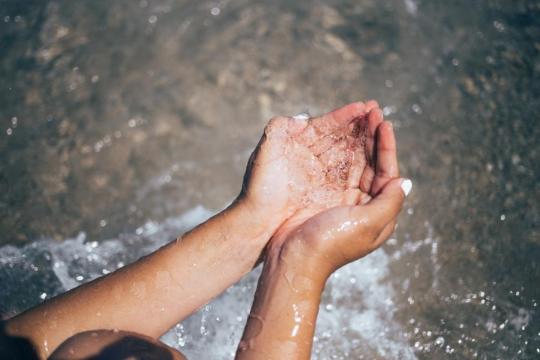
Using water is a very easy and common way to conduct a cleansing. It can be as simple as using a shower to wash away negativity, or using ceremonial water that has been charged or blessed in any way. Within showers/baths you can also ritualize them with salts, baths, and safe-to-use herbs and oils.
Blessed or charged water can also be used to cleanse the spaces around you. Throwing or sprinkling water is common to see in many practices, and witches who utilize more modern tools may keep (as an example) sun charged water in a spray bottle to use whenever needed.
Essential Oils Cleansing:

Many believe in essential oils being important for cleansing themselves and other people. Witches may use essential oil rollers to draw sigils on themselves or others to induce cleansing, and drops can be put onto objects to cleanse them of negative energy.
Smoke Cleansing:

Smudging vs. Cleansing
A very important discussion happening within the Pagan/Wiccan community right now is the difference between smudging and smoke cleansing. Smudging has very important roots in various Indigenous (used as an umbrella term to cover a wide range of tribes and their cultures, not meant to be a blanket term treating them as a monolith) traditions. Appropriating smudging into your pagan practices outside of appropriate contexts is offensive. The act of smudging should be given the treatment it deserves as a sacred, closed practice.
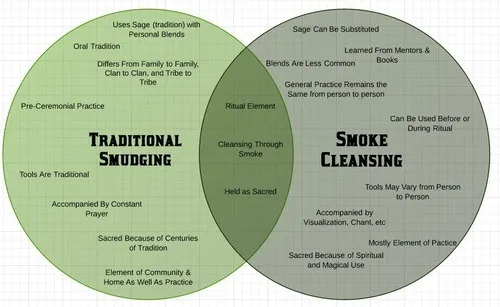
Image source: https://greenmanmeadows.com/smudging-vs-smoke-cleansing/
I also encourage those outside of any Indigenous community to abstain from using white sage and palo santo in their practices. These two are incredibly endangered due to harmful harvesting practices and heavily overconsumption. These are sacred to closed cultures and their ritualistic traditions, it is not our place to take resources from them.
Smoke cleansing itself can be done with a bundle of herbs either held in hand or placed within some sort of fireproof bowl (typically an Abalone shell). To cleanse yourself or someone else with smoke, many start either at the head or the feet and work their way across the body with a movement of said smoke. In an upcoming post I’ll list important information to know about smoke cleansing for any pet owners out there looking to get into the practice!
9 notes
·
View notes
Text
College Preparation Ritual
This spell is mainly to get me ready and motivated to start the summer semester. It will be my first semester. I will be taking an orientation course, English 101, and Psychology 101. Im really excited, English is a strong subject for me, and I'm sure I will enjoy the psychology class, as that is my major. It is also for me to know what to expect.
Needed
Rosemary
Lemon Balm
Tarot Cloth
Tarot Deck
Blue Candle
Candle Holder
Altar Oil
Plate
Offerings Bowl
Charcoal
Mugwort
Lavender
Catnip
Allspice
Intentions
I want to pass this first semester with an 80% or higher in all my classes. To do this I intend to spend at least 3 hours a day on each subject. Hopefully the orientation course is fairly easy and I don't need to spend much time on it but as for the reading and psychology course I must spend 3 hours a day. I will check my grades and ask for help when needed. If I can't get my work done alone, then I will ask for a tutor to help me out. I will be asking for extra time on tests if needed, and for a weekly schedule with everything that I will need to get done on a specific day.
How To
Wait until the full moon, do the ritual at night. In my case that is today, May 5th.
Lay out everything in front of me and neatly organize everything needed. Ground yourself.
Begin by cleansing the space around you and calling on the four element. Do this by lighting a charcoal tablet and placing it into the offering bowl. Drop some lavender into the bowl and say a cleansing incantation.
Drop some more lavender to call on the element of air. Drop allspice to call on fire. Drop some catnip to call on water. And finally, mugwort to call on earth
This will cause a build up of energy. Harness that energy by practicing mindfulness or by meditating.
Now get the plate and pour some altar oil onto it. Then roll the blue candle on the plate and coat it in altar oil. Next, sprinkle on rosemary and lemon balm on the candle.
Light the candle and place into the candle holder. Burn it to completion
As the candle is burning, I shall do a tarot reading to determine what to expect as I approach the start of the summer semester.
Reflection
So did the ritual at 8 pm. It took about 30 minutes to complete. I started with a meditation as the moon began to rise. Soon after I started I could see the moon in the sky. I followed the instructions to a T. I drew asked the deck what to expect going into the summer semester. I drew The Star, The Emperor, and The Ace of Pentacles. I took it as advice instead. It didn't really tell me what to expect just gave me advice. I think that is because I already knew what I would expect. I felt like it as trying to tell me to have hope and believe in myself. To set boundaries in the form of asking for accomodations for my autism. And most importantly, to be ready for hard work. be ready to stretch myself a bit.
The Star
So I feel pretty strongly that this card is telling me to have hope as the end of fucking around is upon me. And the beginning of college nears, i am beginning to realize actual hard work is in this situation in order to pass. It's time for me to take my future seriously, and take the risk that is going to college and majoring in psychology
The Emperor
Like I said before, now is the time to ask for accomodations. I feel bad because I would be asking my professors to essentially take time out of their busy weeks to make a calendar/schedule for me so I know what needs to get on on a day to day basis. but it might just be vital to my success. I find it difficult to map out what needs to get done everyday because it's overwhelming to look at a long list of tasks that need to be done. I need help breaking it down into smaller chunks. It's not like what I'm asking for is an unreasonable accommodation either.
The Ace of Pentacles
I feel like I get held back by being afraid of not being perfect. Like my mom used to hold me to a standard of passing all my classes with A's because I was able to manage that one year. I'm afraid of not being able to pass my classes. I'm scared I'm gonna move slower than everyone else because that how it felt in high school especially in my junior year. That combined with the fact that I just wasn't interested anymore lead to me dropping out of CRAS. I still had that perfection mindset but I was afraid. I was afraid of inconveniencing my teachers by asking them to slow down. I was scared to ask for tutoring because I was taking time off from busy students to help me.
#witch#witch aesthetic#witch community#witches#witchyvibes#witch tips#witchy#witchcraft#green witch#pagan witch#college#student#university#school
7 notes
·
View notes
Text
Nail Care 101: A Comprehensive Guide to Healthy and Gorgeous Nails
Nails have the remarkable ability to reflect our overall health and attention to self-care. Whether you prefer to keep them short and natural or love experimenting with vibrant nail art, proper nail care is essential for maintaining their health and appearance. In this blog post, we'll delve into a comprehensive guide to achieving strong, beautiful nails that are sure to turn heads.
**1. Healthy Diet, Healthy Nails:
The journey to stunning nails begins from within. Just like your skin and hair, your nails greatly benefit from a well-balanced diet rich in vitamins and minerals. Biotin, often referred to as vitamin H, is particularly crucial for nail health. Foods like eggs, nuts, seeds, and leafy greens can help provide the necessary nutrients for promoting nail growth and strength.
2. Hydration Is Key:
Just as you moisturize your skin, your nails also require hydration. Dry nails are more prone to breakage and splitting. To prevent this, make moisturizing a part of your nail care routine. Invest in a good quality nail and cuticle oil, and apply it regularly to keep your nails hydrated and flexible.
3. Gentle Nail Care Practices:
While it might be tempting to use your nails as tools, like opening packages or scratching surfaces, this can lead to chips and breaks. Treat your nails with care, and use proper tools for such tasks. Avoid using them as makeshift tools to preserve their strength and shape.
4. Regular Trimming and Filing:
Keeping your nails at a manageable length is not only practical but also a crucial aspect of nail care. Trim your nails straight across and then gently round the tips in a slight curve. Regular filing helps prevent snags and maintains a consistent shape.
5. Nail Strengthening:
If you find your nails to be brittle and prone to breaking, consider incorporating a nail strengthener into your routine. These products often contain ingredients like keratin and calcium to fortify your nails and promote growth.
6. Clean and Dry:
Cleanliness is paramount in nail care. Bacteria and fungi can easily thrive in damp environments, leading to infections. After washing your hands, make sure to dry your nails thoroughly, especially the area around the cuticles.
7. Mindful Cuticle Care:
Pushing back your cuticles gently after a warm shower can help maintain a neat appearance. However, avoid cutting them too aggressively, as this can increase the risk of infection. Instead, use a cuticle remover gel or cream to soften the cuticles before gently pushing them back.
8. Nail Polish Practices:
If you love adorning your nails with polish, opt for a high-quality base coat before applying the color. This helps prevent staining and provides a smooth surface for the polish. Also, allow your nails to breathe occasionally by going polish-free for a few days.
9. Removing Polish Correctly:
When it's time to switch up your nail color, ensure that you're removing the polish properly. Use an acetone-free nail polish remover to prevent excessive drying. Gently swipe the polish off in one direction to avoid unnecessary friction.
10. Professional Care:
If you're unsure about certain aspects of nail care or have specific concerns, seeking advice from a professional nail technician or a dermatologist is a wise choice. They can provide personalized recommendations and solutions tailored to your nails' unique needs.
2 notes
·
View notes
Text
Car Fixing 101: A Comprehensive Guide to Maintaining Your Lorry in Top Shape
""
Whether you're a seasoned vehicle proprietor or a newbie motorist, comprehending the fundamentals of automobile repair work is crucial for keeping the longevity as well as performance of your automobile. From regular upkeep jobs to fixing usual issues, having a solid structure in car repair can save you both time as well as cash in the future. In this detailed overview, we'll walk you via the crucial aspects of automobile repair work, giving you with the understanding and also self-confidence to tackle minor repair services as well as make educated choices when looking for specialist help.Paragraph 2: The
very first step in ending up being an educated car proprietor is understanding the value of routine maintenance. On a regular basis checking as well as changing fluids, such as engine oil, coolant, and brake fluid, can considerably extend the life expectancy of your car's essential components. In addition, finding out how to examine and also keep vital parts like the battery, tires, and brakes will not only guarantee your security on the road however additionally stop costly repair work down the line. We'll look into these maintenance jobs, supplying step-by-step instructions and practical tips to maintain your automobile running efficiently. Additionally, we'll discover usual automobile troubles, such as engine overheating, strange noises, as well as electrical issues, furnishing you with the expertise to recognize the origin and also take ideal activity. By empowering yourself with vehicle fixing know-how, you'll be able to make informed decisions when looking for expert assistance, ensuring you obtain quality service at a fair cost.
Read more here buy bearings
2 notes
·
View notes
Text
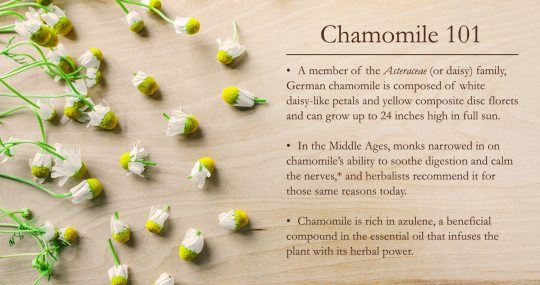
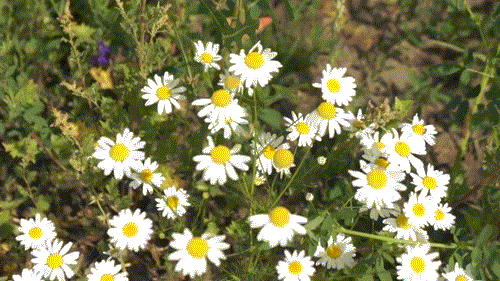
Like a humble daisy, the tiny chamomile flower doesn’t claim much spotlight, but its impact on herbal medicine and folklore is undeniable and enduring. For many people, a simple chamomile tea may be their first introduction to herbalism, used in many households to promote everything from relaxation to healthy digestion.* And with good reason: chamomile is rich in azulene, a beneficial compound in the essential oil that has worked its herbal magic throughout history for a variety of uses. Despite its seemingly humble demeanor, it is one of the most trusted plants in herbalism today. We feature it in several of our teas but showcase it center stage in our Chamomile tea and our Chamomile with Lavender tea.
There are several species of chamomile, but at Traditional Medicinals (TM), we use German chamomile (Matricaria recutita). A member of the Asteraceae (or daisy) family, German chamomile is composed of white daisy-like petals and yellow composite disc florets. Found in populated areas and temperate climates, it can stand up to 24 inches high in full sun. We source some of our favorite chamomile from the sunny fields of Poland and from fertile, Fair Trade-Certified™ farms of Egypt’s Nile River Valley. Here, harvesters gather the plant with large metal combs, designed to pick the flowers alone, thereby isolating the most medicinal source of the plant from the leaves and stems. TM is one of the rare tea companies to only use the chamomile flower itself, which gives our tea an especially fragrant, honeyed apple character and helps us reach higher levels of azulene to achieve the pharmacopoeial-grade herbs we seek.
In fact, chamomile’s appley aromatics first gave the herb its common name, derived from the original Greek chamaimēlon, or “earth-apple.” Ancient cultures were the first to sing the herb’s praises. The ancient Greek physician Dioscorides and naturalist Pliny the Elder prescribed it, Egyptian women mixed it with crushed rose petals to apply to their skin, and before modern preservation techniques were available, cooks soaked rancid meat in chamomile to mask unpleasant odors. In the Middle Ages, when hygiene was particularly difficult, people scattered chamomile on floors to help repel vermin and pests and to serve as a natural deodorizer. For hundreds of years, farmers have planted chamomile as a cover crop to attract beneficial insects and repel the pesky ones. As resilient to being stepped on inside as it is in meadows, chamomile has rightfully earned a reputation as a hardy and humble flower.
These folkloric uses undoubtedly stem from the plant’s soothing and calming properties. Throughout history, herbalists and physicians used chamomile for a variety of reasons. The ancient Greeks used it to help address the female reproductive system, the Egyptians used it to mummify bodies, and the Anglo-Saxons considered it one of their nine sacred herbs. By the Middle Ages, monks narrowed in on chamomile’s ability to soothe digestion and calm the nerves,* and herbalists recommend it for those same reasons today. Given chamomile’s popular application for bedtime and relaxation, don’t be surprised if you see beauty experts championing the use of chamomile tea bag compresses to soothe puffy eyes, as well.With such a wide variety of applications throughout such a wide span of history, it isn’t surprising that chamomile has earned its reputation as a household herb. But sometimes the humble is often taken for granted. The next time you seek a sip of chamomile tea or find it growing in a field, remember to give this tiny yet mighty plant the thanks it deserves.
https://www.traditionalmedicinals.com/articles/plants/chamomile-101/
5 notes
·
View notes